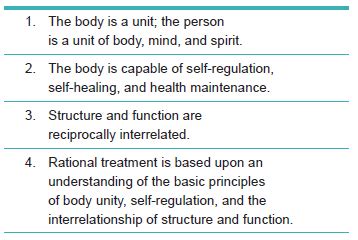Intro
Discover osteopathic medicine definition, a holistic approach to healthcare emphasizing preventive care, manual therapy, and osteopathic manipulative treatment, promoting overall well-being and patient-centered care.
Osteopathic medicine is a branch of healthcare that emphasizes a holistic approach to patient care, focusing on the interconnectedness of the body's systems and the role of the musculoskeletal system in overall health. This approach to medicine was developed in the late 19th century by Andrew Taylor Still, a physician who sought to create a more comprehensive and preventative approach to healthcare. Osteopathic medicine is based on the principle that the body has an inherent ability to heal itself, and that the osteopathic physician's role is to facilitate this process by identifying and treating the underlying causes of illness and disease.
The osteopathic approach to medicine is distinct from the traditional allopathic approach, which often focuses on treating symptoms and diseases with pharmaceuticals or surgery. Osteopathic physicians, also known as DOs (Doctors of Osteopathic Medicine), receive training in all aspects of medicine, including diagnosis, treatment, and prevention, as well as osteopathic manipulative treatment (OMT), a hands-on approach to diagnosing and treating musculoskeletal and other systemic disorders. OMT involves the use of gentle, non-invasive manual techniques to restore balance and function to the body's systems, promoting healing and overall well-being.
The benefits of osteopathic medicine are numerous, and its approach has been shown to be effective in treating a wide range of conditions, from chronic pain and musculoskeletal disorders to respiratory and cardiovascular diseases. By focusing on the whole person - body, mind, and spirit - osteopathic physicians are able to provide comprehensive, patient-centered care that addresses the underlying causes of illness and disease, rather than just treating symptoms. This approach has been shown to lead to better health outcomes, improved patient satisfaction, and reduced healthcare costs.
Osteopathic Medicine Principles

The principles of osteopathic medicine are based on a deep understanding of the interconnectedness of the body's systems and the role of the musculoskeletal system in overall health. The four core principles of osteopathic medicine are: (1) the body is a unit, with all systems interconnected and interdependent; (2) the body has an inherent ability to heal itself, and the osteopathic physician's role is to facilitate this process; (3) structure and function are interrelated, and changes in one can affect the other; and (4) rational treatment is based on an understanding of these principles, and should be tailored to the individual patient's needs.
These principles guide the osteopathic physician's approach to patient care, from diagnosis and treatment to prevention and health promotion. By understanding the complex relationships between the body's systems, osteopathic physicians are able to identify and treat the underlying causes of illness and disease, rather than just treating symptoms. This approach has been shown to lead to better health outcomes, improved patient satisfaction, and reduced healthcare costs.
Osteopathic Manipulative Treatment (OMT)
Osteopathic manipulative treatment (OMT) is a hands-on approach to diagnosing and treating musculoskeletal and other systemic disorders. OMT involves the use of gentle, non-invasive manual techniques to restore balance and function to the body's systems, promoting healing and overall well-being. OMT can be used to treat a wide range of conditions, from chronic pain and musculoskeletal disorders to respiratory and cardiovascular diseases.The benefits of OMT are numerous, and its use has been shown to be effective in reducing pain and inflammation, improving range of motion and flexibility, and promoting relaxation and stress reduction. OMT can also be used to enhance athletic performance, improve posture and balance, and promote overall health and well-being. By incorporating OMT into their practice, osteopathic physicians are able to provide comprehensive, patient-centered care that addresses the whole person - body, mind, and spirit.
Osteopathic Medicine Education and Training

Osteopathic physicians receive comprehensive education and training in all aspects of medicine, including diagnosis, treatment, and prevention, as well as osteopathic manipulative treatment (OMT). The typical osteopathic medical school curriculum includes four years of academic study, followed by clinical rotations and residency training. Osteopathic medical students learn about the principles of osteopathic medicine, including the interconnectedness of the body's systems and the role of the musculoskeletal system in overall health.
In addition to their medical education, osteopathic physicians also receive training in OMT, which includes the use of gentle, non-invasive manual techniques to restore balance and function to the body's systems. This training includes both classroom instruction and hands-on practice, and is designed to prepare osteopathic physicians to provide comprehensive, patient-centered care that addresses the whole person - body, mind, and spirit.
Osteopathic Medicine Specialties
Osteopathic medicine encompasses a wide range of specialties, from primary care and pediatrics to surgery and emergency medicine. Osteopathic physicians can choose to specialize in any area of medicine, and many go on to pursue additional training and certification in their chosen specialty. Some common specialties for osteopathic physicians include:- Family medicine: providing comprehensive, patient-centered care to patients of all ages
- Pediatrics: providing medical care to infants, children, and adolescents
- Internal medicine: providing medical care to adults, with a focus on prevention and management of chronic diseases
- Surgery: performing surgical procedures to repair or remove damaged or diseased tissues and organs
- Emergency medicine: providing emergency medical care to patients in crisis situations
Regardless of their specialty, osteopathic physicians are committed to providing comprehensive, patient-centered care that addresses the whole person - body, mind, and spirit. By focusing on the interconnectedness of the body's systems and the role of the musculoskeletal system in overall health, osteopathic physicians are able to provide effective, preventative care that promotes healing and overall well-being.
Osteopathic Medicine Benefits

The benefits of osteopathic medicine are numerous, and its approach has been shown to be effective in treating a wide range of conditions, from chronic pain and musculoskeletal disorders to respiratory and cardiovascular diseases. Some of the key benefits of osteopathic medicine include:
- Comprehensive, patient-centered care: osteopathic physicians focus on the whole person - body, mind, and spirit - to provide effective, preventative care
- Emphasis on prevention: osteopathic physicians emphasize the importance of lifestyle modifications, such as diet and exercise, to prevent illness and disease
- Hands-on approach: osteopathic manipulative treatment (OMT) provides a gentle, non-invasive approach to diagnosing and treating musculoskeletal and other systemic disorders
- Reduced reliance on pharmaceuticals: osteopathic physicians often use OMT and other non-pharmacological approaches to treat conditions, reducing the need for medications and their potential side effects
- Improved health outcomes: osteopathic medicine has been shown to lead to better health outcomes, improved patient satisfaction, and reduced healthcare costs
By focusing on the interconnectedness of the body's systems and the role of the musculoskeletal system in overall health, osteopathic physicians are able to provide effective, preventative care that promotes healing and overall well-being. Whether you're seeking treatment for a specific condition or simply looking to improve your overall health, osteopathic medicine offers a unique and comprehensive approach to patient care.
Osteopathic Medicine and Research
Osteopathic medicine is a rapidly evolving field, with ongoing research and development in the areas of osteopathic manipulative treatment (OMT), osteopathic principles and practice, and the application of osteopathic medicine to various patient populations. Some of the current research topics in osteopathic medicine include:- The effects of OMT on pain and inflammation
- The role of osteopathic medicine in the treatment of chronic diseases, such as diabetes and cardiovascular disease
- The application of osteopathic medicine to pediatric and geriatric populations
- The use of osteopathic medicine in sports medicine and athletic performance enhancement
By continuing to advance our understanding of osteopathic medicine and its applications, researchers and clinicians can work together to provide the most effective, patient-centered care possible. Whether you're a healthcare professional or simply interested in learning more about osteopathic medicine, there are many resources available to help you stay up-to-date on the latest research and developments in this field.
Osteopathic Medicine and Patient Care

Osteopathic medicine is a patient-centered approach to healthcare, focusing on the whole person - body, mind, and spirit - to provide comprehensive, effective care. Osteopathic physicians work closely with their patients to understand their unique needs and develop personalized treatment plans that address their physical, emotional, and spiritual well-being. Some of the key aspects of osteopathic medicine and patient care include:
- Patient-centered care: osteopathic physicians focus on the patient's needs and concerns, working to develop a deep understanding of their unique situation and develop a personalized treatment plan
- Holistic approach: osteopathic medicine considers the interconnectedness of the body's systems and the role of the musculoskeletal system in overall health, providing a comprehensive approach to patient care
- Preventative care: osteopathic physicians emphasize the importance of lifestyle modifications, such as diet and exercise, to prevent illness and disease
- Osteopathic manipulative treatment (OMT): osteopathic physicians use gentle, non-invasive manual techniques to restore balance and function to the body's systems, promoting healing and overall well-being
By focusing on the whole person - body, mind, and spirit - osteopathic physicians are able to provide comprehensive, patient-centered care that addresses the underlying causes of illness and disease, rather than just treating symptoms. Whether you're seeking treatment for a specific condition or simply looking to improve your overall health, osteopathic medicine offers a unique and effective approach to patient care.
Osteopathic Medicine and Healthcare Reform
Osteopathic medicine has the potential to play a significant role in healthcare reform, offering a comprehensive and preventative approach to patient care that can help to reduce healthcare costs and improve health outcomes. Some of the ways that osteopathic medicine can contribute to healthcare reform include:- Emphasis on prevention: osteopathic medicine emphasizes the importance of lifestyle modifications, such as diet and exercise, to prevent illness and disease
- Reduced reliance on pharmaceuticals: osteopathic physicians often use OMT and other non-pharmacological approaches to treat conditions, reducing the need for medications and their potential side effects
- Focus on patient-centered care: osteopathic medicine prioritizes the patient's needs and concerns, working to develop a deep understanding of their unique situation and develop a personalized treatment plan
- Integration with other healthcare disciplines: osteopathic medicine can be integrated with other healthcare disciplines, such as allopathic medicine and nursing, to provide comprehensive and effective care
By incorporating the principles and practices of osteopathic medicine into the broader healthcare system, we can work towards a more comprehensive and preventative approach to patient care, one that prioritizes the whole person - body, mind, and spirit - and promotes healing and overall well-being.
Osteopathic Medicine and the Future of Healthcare

Osteopathic medicine has the potential to play a significant role in shaping the future of healthcare, offering a comprehensive and preventative approach to patient care that can help to reduce healthcare costs and improve health outcomes. Some of the ways that osteopathic medicine can contribute to the future of healthcare include:
- Emphasis on prevention: osteopathic medicine emphasizes the importance of lifestyle modifications, such as diet and exercise, to prevent illness and disease
- Reduced reliance on pharmaceuticals: osteopathic physicians often use OMT and other non-pharmacological approaches to treat conditions, reducing the need for medications and their potential side effects
- Focus on patient-centered care: osteopathic medicine prioritizes the patient's needs and concerns, working to develop a deep understanding of their unique situation and develop a personalized treatment plan
- Integration with other healthcare disciplines: osteopathic medicine can be integrated with other healthcare disciplines, such as allopathic medicine and nursing, to provide comprehensive and effective care
By incorporating the principles and practices of osteopathic medicine into the broader healthcare system, we can work towards a more comprehensive and preventative approach to patient care, one that prioritizes the whole person - body, mind, and spirit - and promotes healing and overall well-being. As the healthcare landscape continues to evolve, osteopathic medicine is well-positioned to play a leading role in shaping the future of healthcare, and providing effective, patient-centered care to individuals and communities around the world.
What is osteopathic medicine?
+Osteopathic medicine is a branch of healthcare that emphasizes a holistic approach to patient care, focusing on the interconnectedness of the body's systems and the role of the musculoskeletal system in overall health.
What is osteopathic manipulative treatment (OMT)?
+Osteopathic manipulative treatment (OMT) is a hands-on approach to diagnosing and treating musculoskeletal and other systemic disorders, using gentle, non-invasive manual techniques to restore balance and function to the body's systems.
What are the benefits of osteopathic medicine?
+The benefits of osteopathic medicine include comprehensive, patient-centered care, emphasis on prevention, reduced reliance on pharmaceuticals, and improved health outcomes.
In conclusion, osteopathic medicine offers a unique and comprehensive approach to patient care, one that prioritizes the whole person - body, mind, and spirit - and promotes healing and overall well-being. By understanding the principles and practices of osteopathic medicine, individuals can make informed decisions about their healthcare and work towards a healthier, happier life. We invite you to share your thoughts and experiences with osteopathic medicine, and to join the conversation about the future of healthcare. Together, we can work towards a more comprehensive and preventative approach to patient care, one that prioritizes the whole person and promotes healing and overall well-being.
